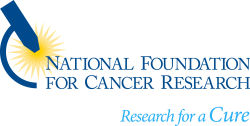 September is Ovarian Cancer Awareness Month, highlighting a disease that kills nearly 15,000 women annually out of the 21,000 diagnosed. Relatively uncommon as cancers go, ovarian cancer nevertheless causes the most deaths from all gynecological cancers. Known as the “silent killer”, Ovarian Cancer presents no symptoms at all, or symptoms that are so general — abdominal enlargement or swelling, abdominal fullness and pain, pain in lower abdomen — they cause no immediate alarm and are mistaken for another, and more likely, ailment. When the cancer finally is diagnosed, it is often at an advanced stage. This has led to a sobering statistic: 59 percent of women are diagnosed when the disease is advanced and less curable.
September is Ovarian Cancer Awareness Month, highlighting a disease that kills nearly 15,000 women annually out of the 21,000 diagnosed. Relatively uncommon as cancers go, ovarian cancer nevertheless causes the most deaths from all gynecological cancers. Known as the “silent killer”, Ovarian Cancer presents no symptoms at all, or symptoms that are so general — abdominal enlargement or swelling, abdominal fullness and pain, pain in lower abdomen — they cause no immediate alarm and are mistaken for another, and more likely, ailment. When the cancer finally is diagnosed, it is often at an advanced stage. This has led to a sobering statistic: 59 percent of women are diagnosed when the disease is advanced and less curable.
Dr. Robert C. Bast, Vice President for Translational Research at the MD Anderson Cancer Center in Texas and NFCR Fellow, has made ovarian cancer his life’s work, and recently developed a model using the tumor suppressor gene DIRAS3 (also known as ARHI). DIRAS3, expressed in normal ovarian cells, was found to be downregulated in up to 60 percent of ovarian cancers, and its loss is associated with decreased progression-free survival. DIRAS3 inhibits cell growth and even acts as a negative growth regulator; Bast’s model hints that DIRAS3 carries this out via autophagy, where a cell becomes so starved of outside nutrients that it begins to consume itself in order to survive, going into a dormant state. Bast goes so far as to call DIRAS3 an autophagy “master-switch.”
“We have found that dormant, drug resistant [ovarian] cancer cells found in over 80 percent of positive second look operations exhibit autophagy and express DIRAS3,” Bast observed. “That led us to look at what steps in the autophagic process this effected.”
Bast found that cells with active DIRAS3 were dying in culture, but they weren’t dying from the “normal” means of apoptosis, but rather by extreme autophagy. To the layman, it may not be important how cancer cells die, just so long as they do. But to oncologists and medical investigators, how something dies, particularly a cancer cell (metastatic or otherwise), is extremely important because different drugs and therapies target different biological processes. Apoptosis is programmed into a person’s DNA; natural biochemical cues lead to cell changes that causes the cell to die. Another type of cell death, necrosis, stems from traumatic injury to the cell. Far more complex is autophagy, which, as normal bodily function, oversees the (usually) orderly degradation and recycling of cellular components, and is an adaptive response to stress. Technically speaking, it is not supposed to kill the cell.
Bast postulates that DIRAS3 and autophagy may explain why some tumors seemingly go inactive but do not necessarily die; autophagy is not an instant death. Many solid cancers can remain dormant for years and then grow progressively to kill the host. Additionally, DIRAS3 is not restricted to just ovarian cancer; Bast found it plays a role in breast, colon, lung and pancreatic cancer.
“We were looking for genes that were down-regulated in cancer but not in normal cells, and so we thought those might be important in the development of cancer,” says Bast. “It seems to be important in the development in a number of different cancers. What we found is that it is the most down-regulated gene in ovarian cancer that we could find.”
He continues: “Tumor dormancy is still not fully understood; it probably depends to some extent on cells not dividing or dying as rapidly as they divide or not developing a good blood supply or having host immunity resistance to keep them in check. But whatever the mechanism, it’s the persistence of dormant drug-resistant cancer cells that is one of the reasons we are not curing more patients.”
References:
Badgwell, DB, et al. (2012). The tumor-suppressor gene ARHI (DIRAS3) suppresses ovarian cancer cell migration through inhibition of the Stat3 and FAK/Rho signaling pathways. Retrieved from: https://www.nature.com/articles/onc2011213
Bast, Robert. (2018). ARHI (DIRAS3) in Autophagy and Dormancy of Ovarian Cancer. Retrieved from: http://grantome.com/grant/NIH/R01-CA135354-08
Cancer.net (2019). Ovarian, Fallopian Tube, and Peritoneal Cancer: Statistics. Retrieved from: https://www.cancer.net/cancer-types/ovarian-fallopian-tube-and-peritoneal-cancer/statistics
Mizushima, N, et al. (2011). Autophagy: Renovation of Cells and Tissues. Retrieved from: https://www.cell.com/cell/fulltext/S0092-8674(11)01276-1?_returnURL=https%3A%2F%2Flinkinghub.elsevier.com%2Fretrieve%2Fpii%2FS0092867411012761%3Fshowall%3Dtrue
Perry, David. (2019). Phone interview with Dr. Robert C. Bast.
Sabbatini, Paul. (2014). Ovarian Cancer — An Introduction with Dr. Paul Sabbatini. Retrieved from: https://www.youtube.com/watch?v=bT4TWbzUnHI
San Fernando Business Journal. (2018). Ovarian Cancer Awareness. Retrieved from: http://www.cbjonline.com/a4sfvbj/supplements/OvarianCancer_SFV_20180917.pdf
Categories: NEWS

